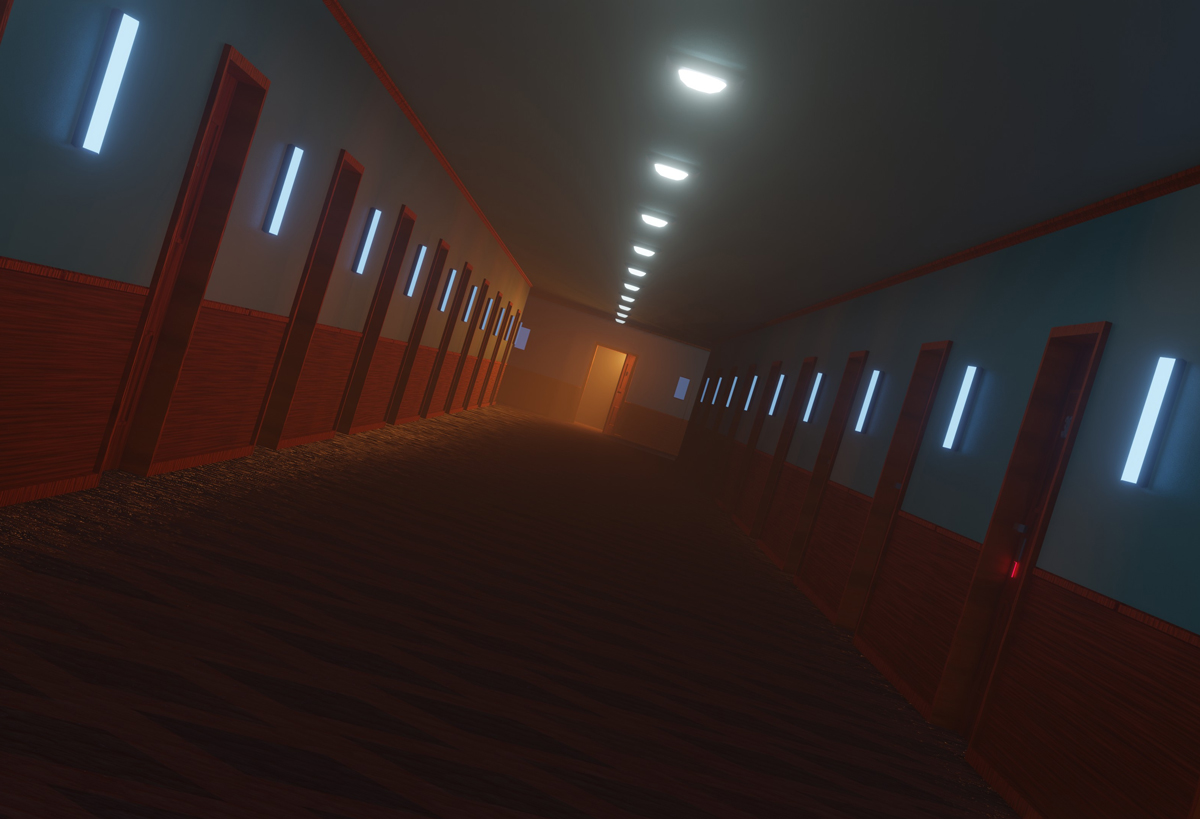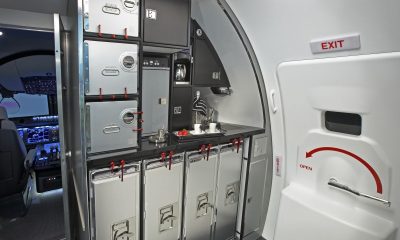What is emergency egress lighting
Emergency egress lighting is provided along escape routes, and in the open areas leading to them, for the safe evacuation of a building in the event of power outages which can occur due to natural disasters, failures of the building’s electrical system, or interruption of power from public facilities. When a building loses normal power, the impaired visibility could negatively affect how people react to an emergency and their ability to evacuate safely. All building codes and safety standards therefore have fundamental requirements for implementation, maintenance and management of emergency lighting for backup operation during power loss. All commercial, industrial, hospitality, health care, retail, public and multi-unit residential buildings are required to operate a specific number and type of emergency luminaires for a specified minimum duration. Emergency egress lights must illuminate internal and external means of egress, including all passageways, turns, corridor intersections, stair treads and landings, exit doors and the exit discharge, so that a building can be quickly and safely evacuated.
Regulatory requirements
The design of emergency lighting systems is stipulated in various national and international standards, regulations and directives. Some of the most referenced codes include the European standard EN 1838, the British standards BS 5266 Parts 1 & 7, the North American Life Safety Code (NFPA 101) and the NFPA 70, the National Electrical Code. U.S. building codes require that emergency egress lights switch to an alternate power source within 10 seconds in the event of failure of the general mains power supply and provide at least 90 minutes of emergency egress illumination. According to EN 1838, a minimum level of horizontal illuminance of 1 lux on the central floor axis for a 2 m wide escape route should be delivered by the emergency lighting systems. The illuminance must be at least 10% of that usually demanded for the implementation of the tasks or at least 15 lux after a maximum switch-on delay of 0.5 seconds. A maximum-to-minimum illuminance uniformity of 10 to 1 shall not be exceeded. 1 hour of anti-panic lighting with at least 0.5 lux at floor level of the open space is required to reduce the likelihood of panic and to enable safe movement of occupants to reach an escape route. All codes require periodic testing of emergency lighting systems to ensure that they will perform properly during emergencies.
Types of emergency lighting systems
As defined by various codes, there are three types of emergency lighting systems. Critical and life safety requirements can be accomplished using separate luminaires with independent wiring powered by an electric generator. This system operates simultaneously with the normal lighting system and should provide the necessary illumination when the normal lighting system fails. Emergency egress lights can also be integrated into a central power supply (CPS) system. They are activated when the primary source (the regular utility) fails. The CPS system is essentially an array of batteries with control at a single central location. It is automatically recharged and ready for further service upon restoration of the primary source. While a CPS solution may prove preferable for larger scale installations and be more cost efficient, self-contained emergency luminaires are relatively straightforward when it comes to installation. They are commonly found in small to medium sized installations, such as schools, offices and shops. Each luminaire within such systems is self-reliant and operates independently of all other luminaires. Self-contained emergency luminaires have integral rechargeable batteries which can provide instant power. The ability to provide instantaneous light lends self-contained emergency lighting systems to applications where a ten-second interruption of power would constitute a hazard.
Lighting technology
The technology for creating visible light from emergency lighting systems has evolved from incandescent through fluorescent to solid state lighting based on light emitting diodes (LEDs). Traditional light sources convert a small amount of the input energy into visible light. High wattage operation creates a considerable load on electrical systems, in particular the battery powered systems. The useful life of fluorescent and incandescent sources is limited, which results in a high re-lamping and maintenance costs. LEDs exhibit a suite of advantages over fluorescent and incandescent lamps. They use semiconductor electroluminescence to produce a controllable spectrum of visible light for illumination, with a wall plug efficiency (WPE) often exceeding 40%. The high efficiency of energy conversion from electrical power to optical power minimizes the system’s drain on the battery and allows to design self-contained emergency egress lights with a drastically reduced physical volume. LEDs provide instant illumination at full intensity, which contributes to enhanced safety. LEDs offer spark-free ignition, which makes them safe to use in hazardous environments involving ignitable dusts and particulates. The long operating life of 50,000 hours or more allows LED emergency lights to provide many years of reliable service.
System design
LED emergency lights are most often integrated luminaires that house LED modules, rather than LED lamps. The LED module has its light emitting surface (LES) tailored to the light distribution requirement. The thermal management system is central to the mechanical engineering for the lighting system and the heat sink is usually formed as one piece with the housing. The waste heat generated at the LED junction is transferred to the ambient air through the heat sink and all other elements that make up the thermal path. Secondary optics regulate luminous flux from the light source either at the module/luminaire level or at the package level. A constant current LED driver runs off DC power or converts power supplied from an alternating current (AC) power source to direct current (DC) power and provide appropriate current to drive the LEDs. The LED driver and other components of a self-contained emergency luminaires such as the rechargeable battery pack, battery charger and control circuitry are either built into the luminaire or are connected via a remote enclosure in close proximity to the luminaire.
Switching circuitry
The LED driver includes switching circuitry that can detect an absence of AC power and automatically switch into emergency operation. Upon restoration of utility power, the luminaire will automatically switch back to operating from the AC power and the battery gets recharged. To avoid labor intensive regular testing and maintenance checks, the luminaire may be designed to accept control input from a central controller through the digital addressable lighting interface (DALI) or via Ethernet. The central controller takes on responsibility for automatic monitoring of the entire emergency lighting system and central testing of individual installations.









Loading...